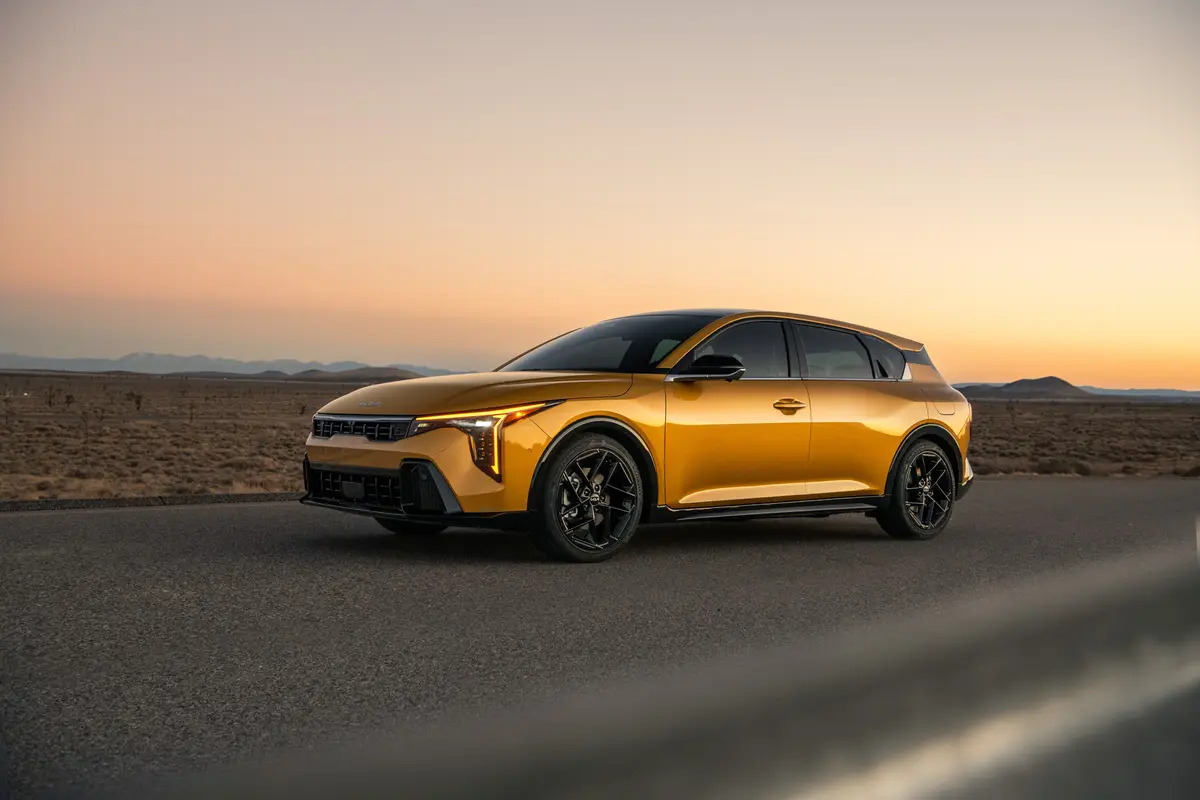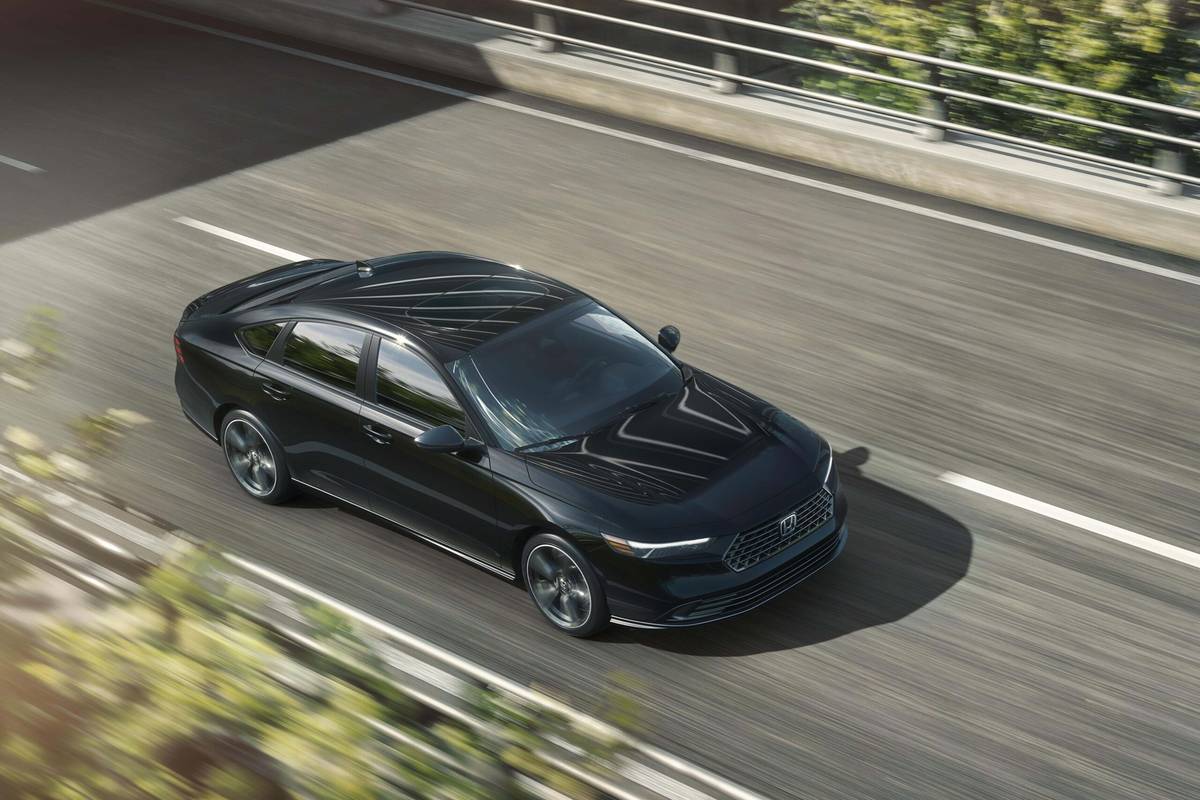washingtonpost.com's view
With smoke from nearby forest and brush fires clouding the International Speedway here, I retreated to my hotel room to breathe filtered air and write this confession.
It is a simple matter: Ford is right and I am wrong.
It apparently makes perfect sense for Ford to hold on to its Mercury Division, the elimination of which I have advocated for several years.
Although it is terribly difficult for me to admit this — so convinced was I of the rightness of my position — it makes even more sense for Mercury to target women in its product development and marketing strategies.
This recantation is painful. I hate admitting that I’m wrong after investing so much passion, so many words, spoken and written, in asserting that I’m right. But I cannot ignore what I’ve seen and heard, and cannot dismiss or otherwise ignore what I’ve learned.
Call my conversion the Mariner Hybrid epiphany. It happened like this:
I drove the 2008 versions of the Ford Escape compact sport-utility vehicle — both the all-gasoline and the gas-electric hybrid models. I found them very much to my liking: attractive inside and out, possessed of reasonable utility and fuel economy, and very pleasant, albeit not necessarily thrilling, on the road.
Both my wife, Mary Anne, and my assistant, Ria Manglapus, two women who are not the least bit chary about expressing opinions, also liked the Escape SUVs. I figured that was that.
But then Ford shipped the front-wheel-drive Mariner Hybrid. I vowed not to waste my time with it. I stood firmly on the rock of reason. The Mariner is just an Escape with another name, I said. Ford simply changed the grille, I said. You ladies go on and drive the thing, I told Mary Anne and Ria. I have more important things to do.
Mary Anne went first. She and Ria have worked out a delicate dance of politesse in these matters, one from which I deem it wise to absent myself.
After her first day in the Mariner, Mary Anne came home raving: “I love it!” she said. “Why didn’t we have this one before? It’s so much more fun than that Escape. It’s different. It’s more friendly. It makes more sense.”
I was stunned. My wife is an intelligent woman, an elementary school teacher with a master’s degree and many hours of postgraduate training. More to the point, she is the consumer from hell — a woman who thinks nothing of driving dozens of miles to return an item, even something as ordinary as jar of mayonnaise, that she’s found wanting in quality or a few cents above the norm in price.
But there she stood telling me that the Mariner Hybrid was distinctively different from the Ford Escape Hybrid she’d driven a few weeks earlier, “more friendly” and “less of an SUV.”
Then, she hit me with this: “Some more test cars are out there [in the driveway]. Does Ria have to drive the Mariner?”
“Yes,” I said.
Silence.
Ria, too, is as smart as a whip. She’s tough. She could run a country, and sometimes, I think she does. She looked straight past those other vehicles in the driveway and picked the Mariner Hybrid.
There is an easy way to tell when Ria likes, or does not like, a vehicle. If she doesn’t like it, she returns it quickly and says “interesting” in a way that reeks of derision. Or, she just laughs derisively and tells me how much she doesn’t like it.
But when Ria likes a vehicle, she returns it reluctantly, and usually with more miles than it seems possible to accumulate in several days of driving. She brought back the Mariner Hybrid with lots of miles. And she, too, commented that she enjoyed it much more than the Ford Escape.
So, it’s clear that I’m wrong. Maybe it’s the treatment of the Mercury Mariner’s front end — less aggressive than that of the Escape, “more friendly,” as Mary Anne said. Maybe it’s the 2008 Mariner’s new, spiffy interior. Maybe the people at Mercury sprinkled female allure powder, or something, all over the Mariner’s passenger cabin. I just don’t know.
But I know that if the Mariner and other Mercury models have that kind of appeal to women, Ford would be silly to get rid of the division. And Mercury would be equally wrongheaded to stop its woman-oriented marketing campaign.
In short, the people at Mercury should stop listening to guys like me. They should continue paying very close attention to women like Mary Anne and Ria.
Nuts & Bolts 2008 Mercury Mariner Hybrid
Complaint: I thought the Mariner Hybrid’s ride and handling were good, but not nearly as pleasing as those of the all-gasoline Ford Escape, Honda CR-V or Toyota RAV4. Mary Anne and Ria, to put it mildly, disagreed.
Ride, acceleration and handling: The majority, 2 to 1 in this case, rules. Both Mary Anne and Ria found the Mariner’s ride, handling and acceleration exceptionally pleasing. Both tried to hold on to this one as long as possible.
Head-turning quotient: Unanimous decision. All three of us liked the exterior and interior treatments — especially the interior.
Body style/layout: It’s a front-engine, compact sport-utility vehicle available with front-wheel drive or all-wheel drive. It has four side doors and a rear liftgate. It uses a combination of electric power, provided by a nickel metal hydride battery pack, and a four-cylinder engine to drive the wheels.
Power mode/transmission: The front-wheel-drive Mariner Hybrid comes with a 2.3-liter, 16-valve, in-line four-cylinder engine that works in tandem with two permanent magnet motors to drive the front wheels. (The all-wheel-drive Mariner Hybrid gets three permanent magnet motors.) The system produces a combined 155 horsepower. That power is transmitted to wheels through a continuously variable automatic transmission.
Capacities: There is seating for five. Maximum cargo capacity, with rear seats folded, is 66 cubic feet. The fuel tank holds 15 gallons of recommended regular unleaded gasoline.
Fuel economy: Astounding for an SUV. We kept this one on the highway, averaging 31 miles per gallon.
Safety: Four-wheel antilock brakes, side and head air bags are standard. But traction and stability control were not available at this writing. We assume that Ford/Mercury will correct that omission, and soon.
Price: Base price on the tested front-wheel-drive model is $27,765. Dealer’s invoice price on that model is $24,234. Price as tested is $29,825, including $3,395 in options (navigation, leather seating surfaces, premium sound system with MP3 capability and six-disc in-dash CD player, retractable cargo cover, backup warning sensor) and a $665 destination charge. Dealer’s price as tested is $27,785.
Purse-strings note: It’s a buy, even with the nickel metal hydride batteries that are likely to be made obsolete by lithium polymer batteries that will be introduced in the next few years. Compare with any compact SUV on the market. Excellent value here.
Latest news



